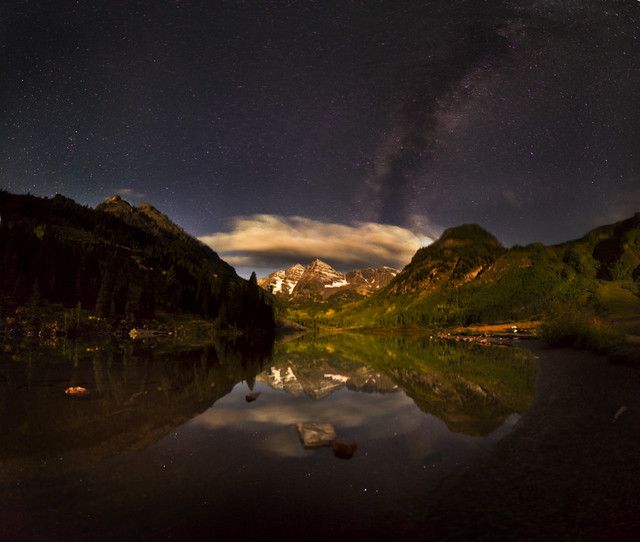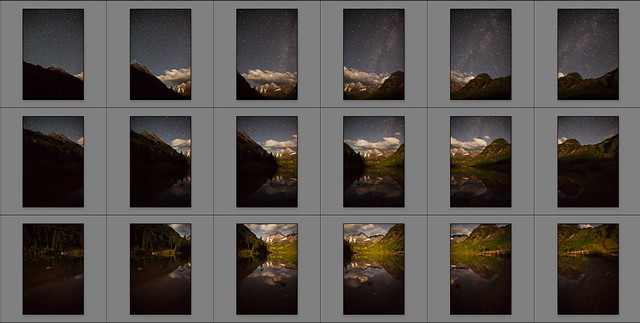nwoods
Expedition Leader
A few more suggestions of Fall from this evening.

I really like this one. Great depth of field, exposure, contrast, and aesthetic beauty in a stark sort of sense.
A few more suggestions of Fall from this evening.

I really like this one. Great depth of field, exposure, contrast, and aesthetic beauty in a stark sort of sense.
I don't think this is related to how we perceive the star movement, which is actually the earth spinning, not the stars moving.
I understand the magnetic declination and how that effects our map orientation to true North around the globe but I don't think that explains why the perceived star movement's speed would change as you move farther North as John stated.
I have to correct my one statement about not understanding why it would be different depending on the direction of view. Since the Earth is rotating on it's axis, the North star appears to us as the center of that rotation. So of course the farther East or West you shift you view from the North star center, the stars will move across our sky at much faster rate being farther out on that circular rotation. Hence, the longer star trails farther out from the North star for the same time duration of exposure.
That being said, I still don't understand why the timing of that movement would change as you head farther North on the globe we live on?
i have never seen any changes in exposure time no matter where i have gone in the world.
i can shoot iso 2000, F1.4 and a 24mm lens at 20 seconds and freeze the entire milky way and have it more visible in the sky than just by looking up up at it. I dont think it has anything to do with the magnetic fields of the earth or how maps are made/ projected.
The stars appear to rotate around both the north and south poles in the sky, of which you generally only see one. Stars very near the pole are almost stationary in the sky, while stars closer to the equatorial plane move quite fast. All move about 15 degrees per hour in right ascension ("horizontally"), but do not move in declination ("vertically").
John, this paragraph from the second link you provided would seem to indicate that location does not matter.


OK re read what you just wrote,
http://www.weatherscapes.com/techniques.php?cat=astronomy&page=startrails :
Stars very near the pole are almost stationary in the sky, while stars closer to the equatorial plane move quite fast
And then take a look at ANY picture pointed at the northern star and tell me that the trails do not get longer the further away from the center they are
and then further down that same page:
I generally do very long exposure times of over 3 hours using very wide-angle lenses such as 20mm or 24mm, and aim to the east or west, or a telephoto lens that points at the pole with a shorter exposure time of about 30 to 60 minutes.
I'm really enjoying your work grntrdtaco. Nicely done. What software do you prefer to use for your pano stitching?
Also I am assuming the motivation to use a tighter lens and stitch them together vs using a single wide angle shot is less distortion and more detail across the final image. Do I have the logic behind doing these correct?
I really do like your results. I'll have to play with this some. Although I am jealous of the beautiful scenery you appear to have right in your backyard. Can you ship a nice lake down here to Tucson for me please.:elkgrin:
John, please read what is written by me and more importantly by your link. I said "location" does not seem to matter as the stars move at 15 degrees per hour regardless. Your link is also saying the same thing. It doesn't matter if you're in Arizona or Alaska the stars move through the sky at the same rate. Direction of course is different and the further away one points their camera from the northern or southern poles the longer the trails will be. Stars in the sky resting closer to the poles appear more static, regardless of ones location on the planet.
thanks, i have found that it is just a slightly different perspective that is just somehow different with a panoramic. i could get this in with a fisheye but it would be so distorted that it wouldn't look the same. that last one is nearly 180º view from right to left and i had the camera pointed nearly vertical for the top row and straight to the ground for the bottom row. I was worried that i was going to get the tripod in the shot.
+ an added benefit is the image is made form 18 separate 21MP images so the final size of the photo is absolutely enormous. its really larger than any printer can print.
I generally use photoshop to stitch single row (+/- 8 images) and i am experimenting with some demos of different apps right now and dont know the names of them... takes hours just for the computer to stitch an image like this and i am running a liquid cooled 4.3ghz 12 core machine with 24 gigs of ram.
I have actually used my canvas bucket filled with water many many times to make a small puddle in a place where i thought it would look great and get a good reflection off of it.
the only way the stars would move faster or slower in the sky would be if the rotation of the earth was not constant. the distance from arizona to norway is completely irrelevant compared to a few hundred thousand light years between the stars
